Invite children preschool age and up to sort coins with this Montessori-Inspired sensorial activity.
This coin sorting Montessori-Inspired sensorial activity can stimulate learning and encourage preschoolers, kindergarteners, and young elementary students to focus attention and develop their senses as they learn to observe, compare, and sort money.
Please don’t offer this money sorting sensory activity to kids still mouthing objects. Money is dirty and presents a choking hazard. If your child is ready to handle coins independently, please wash them before allowing children to sort coins.
Related: Squeezing an Orange Montessori Practical Life Activity
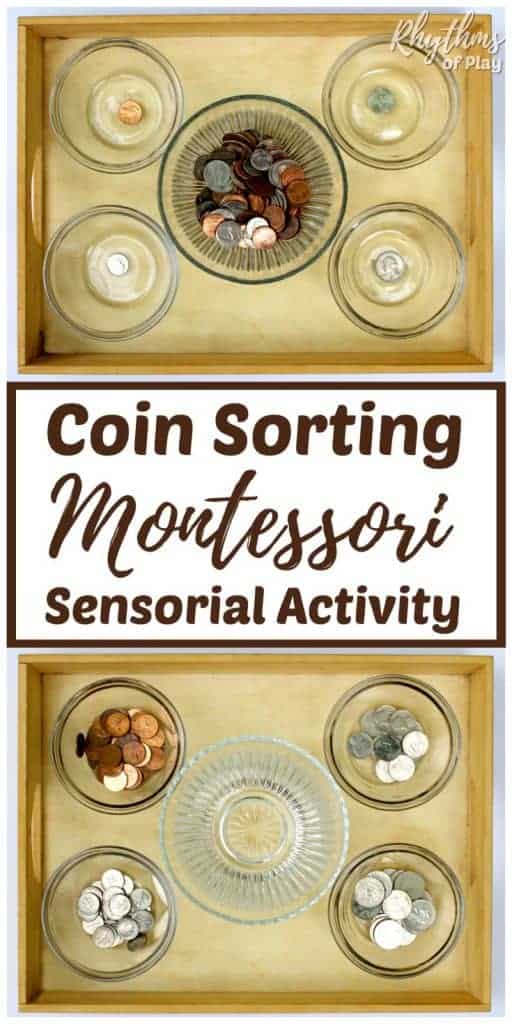
Montessori Sensorial Activities
Montessori believed that children learn about their environment and begin to understand it by developing their sensory system. She noticed that toddlers, preschoolers, and kindergarteners thrive when they are encouraged to participate in various sensory experiences.
So, she designed sensorial activities to stimulate one or more of the five basic senses; sound, touch, sight, smell, and taste. And while this money sorting activity works to stimulate the sense of sound, touch, sight, and even smell–please don’t let your children taste the coins. Money is dirty and can be a choking hazard for even an older child.
Related: Flower Arranging Montessori Practical Life Activity
How is Sorting Coins a Sensorial Activity?
Coin sorting is a Montessori-inspired sensorial activity because although Maria Montessori did not design it, the theories behind Montessori sensorial activities inspired it.
Sorting coins is a sensory activity because it encourages children to focus attention on the sensory characteristics of each coin. And the differences in how each one looks, sounds, and feels.
As they sort money, they can notice the subtle differences in visual appearance, texture, weight, dimension, color, relative size, sound, and even smell. Use glass bowls to increase the auditory component of coin sorting.
Listening to the sound of my daughter sorting the coins is like listening to music. Soon it is easy to discern the difference between a penny and a dime based on the sound. The same experience can happen to children without any “teaching” necessary.
Related: Magnet Fishing: Cool Science for Kids
Coin Sorting Sensorial Activity
Observing, comparing, and sorting coins can help prepare children for the beginnings of logic, reason, and abstract thought. Because when children work with sensorial materials like coins or money, there is a “control of error” where they can check their work without a teacher. This “control of error” can thus help children learn to work independently and develop problem-solving skills.
Sorting money can also help children make purposeful decisions based on the sensory information they perceive about each coin. In addition, this decision-making activity can help establish new nerve pathways in the brain.
Related: Calm Down Sensory Bottles 101
Coin Sorting Activity Materials
- Wooden tray
- Apron for kids
- Glass bowls or other containers for sorting (I recommend glass for the rich sound experience it provides)
- Pennies
- Nickels
- Dimes
- Quarters
Prepare Coin Sorting Sensorial Activity
- Wash the coins, so they are safe for your child to handle. Money is dirty!
- Place a bowl filled with all the coins in the middle of the tray or activity mat.
- Put four bowls around the center bowl filled with all of the coins.
- Drop a penny in the top left bowl, a nickel in the top right bowl, a dime in the bottom left bowl, and a quarter in the bottom right bowl.
- Please have your child put on an apron to signal that it is time to work.
Related: Cutting a Banana Montessori Practical Life Activity
Present Coin Sorting Materials
If this is the first time your child has ever tried sorting coins, you will need to demonstrate each step in the activity first:
- Show the child exactly what you expect them to do by silently and deliberately showing them how to sort coins by placing pennies with pennies, nickels with nickels, etc., for about a minute.
- When finished, place all of the coins back into their starting position, as shown below.
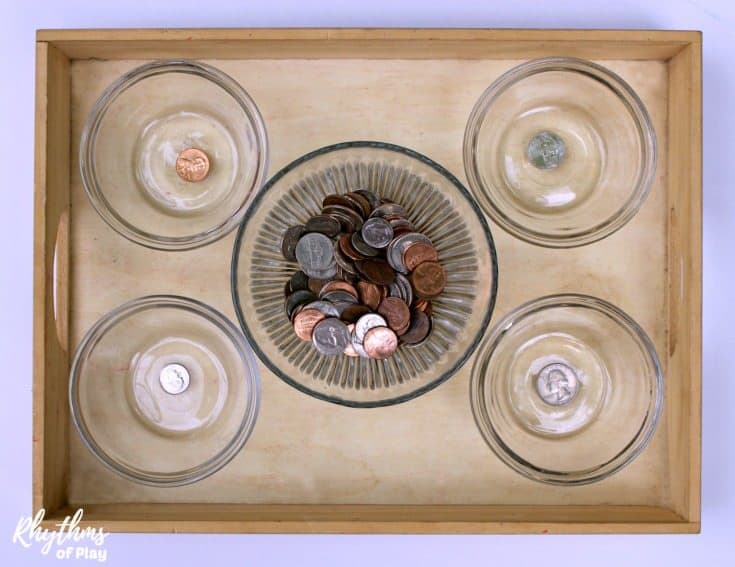
Montessori activities are always done from top to bottom and left to right to prepare the child for reading and writing. So, please put the coins in the bowls in the order listed and shown in the photo above.
Another good way to set up this money sorting activity would be to have the big bowl of coins at the top with four little bowls below it or with the big bowl of money on the left with four little bowls on the right.
Make sure that you always place the money in the little bowls in order from smallest to biggest denomination from top to bottom or left to right.
Doing so can help young children forge nerve connections that prepare them for academics. In addition, working top to bottom and left to right in the early years will make reading and math much easier!
Related: Outdoor Learning Activities for Kids
Invite Children to Sort Coins
Follow the steps below to start this coin sorting activity:
- Place the coin sorting materials in front of a child and invite them to sort coins.
- Ask children to notice any similarities or differences concerning the coin’s size, shape, color, texture, sound, weight, etc.
If the child is not ready or unable to do the activity, gently take their apron off, take the materials away, and try it again later. Please gently do this and ensure that the child knows that they did not do anything ‘bad’ or ‘wrong.’
Related: 15 Ways to Raise a Helper
Benefits of Montessori Sensorial Activities
Montessori believed it was important for young children to manipulate better and classify objects to understand their environment. By working with sensory materials, in this case, coins, children are given knowledge not through teaching but by experiencing it.
Children that do sensory activities, like coin-sorting, often find math and reading much more accessible. In addition, they develop visual acuity and discrimination that enable them to master letters and numbers more easily. You might also enjoy these fun activities for kids.
Learn more about Rhythms of Play HERE!
More Montessori Learning Activities:
- Cutting a Banana: A Montessori Inspired Practical Life Activity
- Flower Arranging: A Montessori Inspired Practical Life Activity
- Squeezing an Orange Montessori Practical Life Activity
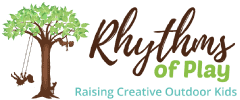
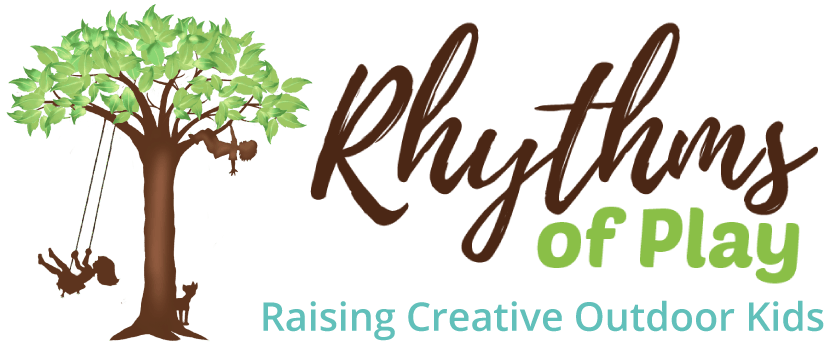


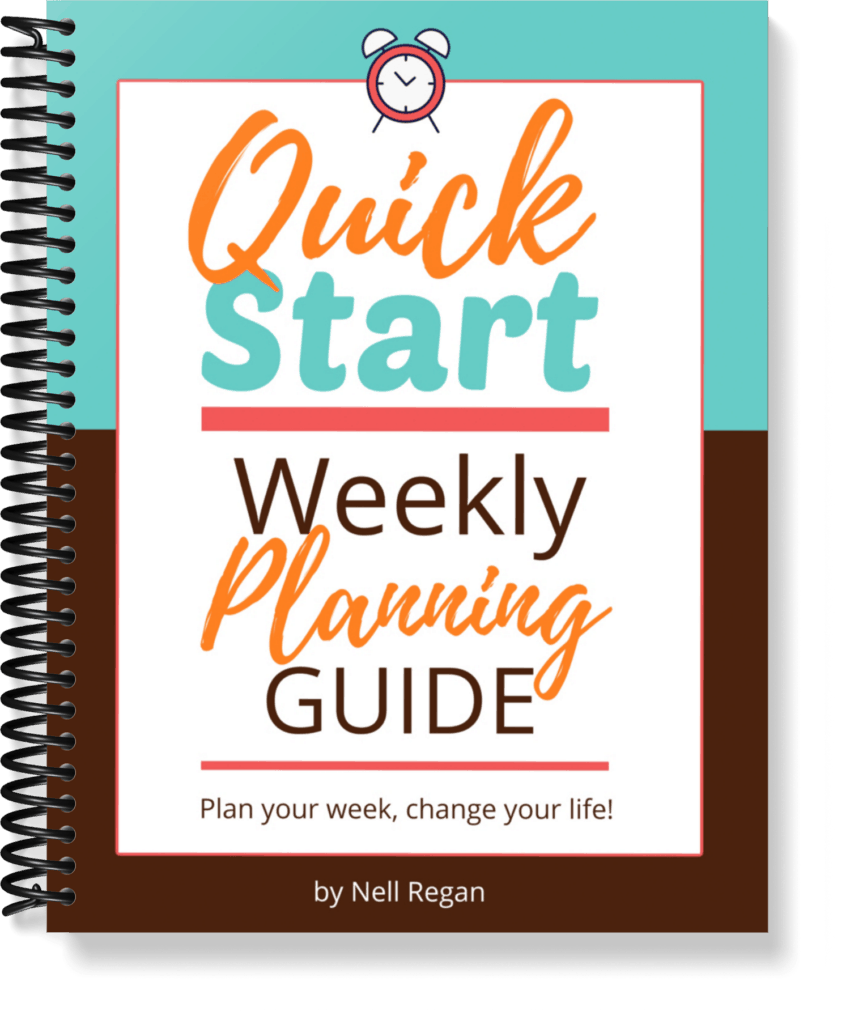
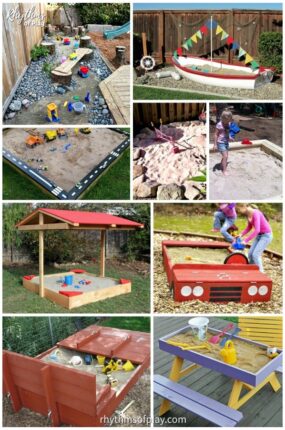
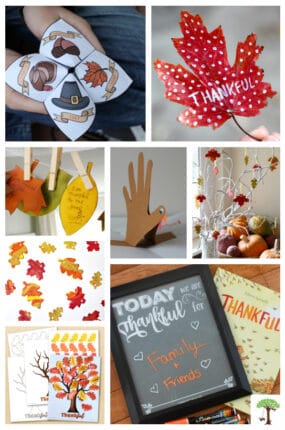
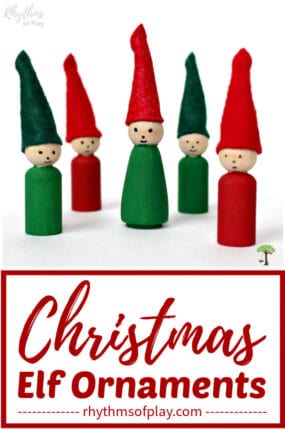
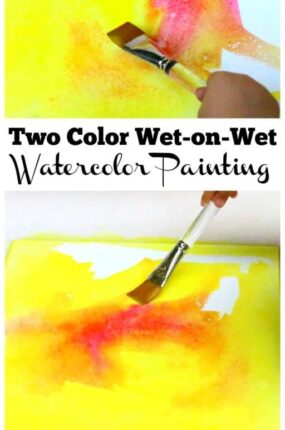
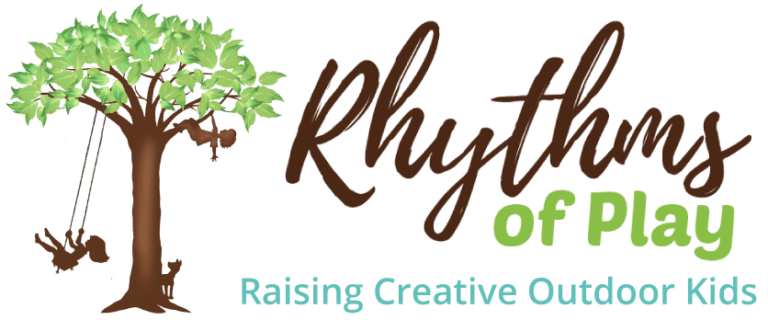
Love the site! I’m seeing a lot of great activities!
Thank you! Glad you enjoyed it 🙂
What age would this be aimed at please?
This activity is aimed at children in preschool and kindergarten Jodie. With that said, please don’t offer this activity to children that are still mouthing objects.